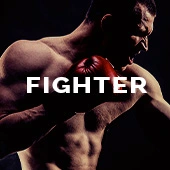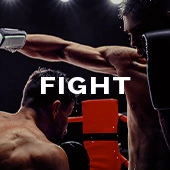by David P. Greisman
As shameful as it is that the two best light heavyweights in the world are still no closer to facing each other, no weight class should be tied down by the lack of one fight being made, at least when there are other options available. There aren’t always.
Adonis Stevenson and Sergey Kovalev remain apart, at least until the proper combination of fate and fortune finally bring them together. That combination will be divined someday through algebra or alchemy. But the fighters themselves do not wait for math and magic to produce the solution. Their careers continue, not quite parallel but still yet to intersect. They fight. They fight the temptation to compromise on their stubborn stands. And so they fight other opposition in the interim.
For Stevenson, that meant one good fight with Andrzej Fonfara followed by three opponents who never had a chance to win. Even his defense this past July against Thomas Williams Jr. was one in which the challenger only had a puncher’s chance, though for a time it seemed as if that dismissive caveat would turn into an accurate prediction, at least until Stevenson landed a shot that ended Williams’ shot.
For Kovalev, there have been easy nights to pass the time in-between the harder options that easily pass muster. Each year, there has been at one opponent who is the best available. Given the politics of the business of the sport, the pool of what’s available is sometimes quite shallow.
Yet Kovalev faced Bernard Hopkins in late 2014, at the time one of the three best 175-pound fighters in the world.
Last year, Kovalev took on Jean Pascal, who was thought to have something left to offer until Kovalev took it out of him.
Later this year, Kovalev will face Andre Ward.
It says a lot about the lack of depth when the toughest challenge Kovalev will have faced so far at light heavyweight is someone who lacks a truly signature win at 175.
Then again, that says something about who Ward is, though who we think Ward is is based largely on what we know Ward was and believe he still can be.
Ward was the best super middleweight in the world and one of the best boxers in the entire sport, not just in his own division.
That was largely confined to a three-year period, from the time Ward upset the apple cart at 168 by outboxing and outpointing Mikkel Kessler in 2009 at the beginning of the “Super Six,” continuing through the tournament with a win over Arthur Abraham in the semifinals and over Carl Froch in the finale in 2001, and ending in 2012 when Chad Dawson, then the champ at 175, drained himself down to Ward’s division and was dispatched in what remains Ward’s most exciting performance to date.
After that came inactivity, whether from injury or due to disagreements with his promoter at the time.
The Dawson fight was Ward’s sole appearance in 2012. There was only one in 2013, 14 months after the last, a victory over undefeated yet unproven contender Edwin Rodriguez. Ward didn’t fight at all in 2014. He fought once in 2015, returning from a 19-month layoff by beating up Paul Smith, who was overmatched, over his best fighting weight and then even further overweight beyond what the contract allowed. Ward was supposed to fight one more time last year but had to pull out with an injury.
Ward had agreed to face Kovalev in 2016, though, and so this year he became a full-fledged light heavyweight. He took on Sullivan Barrera, yet another undefeated contender whose resume was thin but who could at least give some bearing on what Ward was capable of doing at 175 and what Ward would need to work on before a fight with Kovalev. Ward looked rusty at times in winning a wide decision.
He looked better this past Saturday while shutting out Alexander Brand. But that was how he was supposed to look — there is a reason why Brand was whom Ward was supposed to face last November and was picked again for this keep-busy bout. It was a sparring session, Ward getting in work and getting another payday before his Nov. 19 fight.
Kovalev, meanwhile, had some difficulty with the slickness and quickness of Isaac Chilemba last month, though he still won a clear decision. That fed into speculation as to what will happen when Kovalev meets Ward.
Kovalev has been in with skilled boxers before, though Bernard Hopkins was no longer anywhere approaching young or anywhere near Ward’s physical capabilities, while other Kovalev opponents have never been anywhere near Ward’s level. Ward, meanwhile, hasn’t faced someone at the top of his division in five years, nor has he met a light heavyweight approaching Kovalev’s level — at least not at light heavyweight, given that the Dawson bout took place at super middleweight.
It’s a great match to make. It’s an intriguing pairing of styles. Kovalev’s got plenty of positives. Ward has negated so many of his foes. Kovalev is one of the best at 175. Ward was one of the best at 168. Both are undefeated. Both are on boxing observers’ pound-for-pound lists.
But it will be a hard sale.
Kovalev vs. Ward will be a pay-per-view, the first for each as a headliner; Ward opened one braodcast in 2005, when he was just 5-0. While each drew more than 1 million viewers for their victories on HBO earlier this year, that doesn’t always translate into pay-per-view success. Just because you’ll watch someone for the price you’re already paying for premium cable doesn’t mean you’ll be willing to fork over an additional, sizable stack of cash.
Yet it’s a pay-per-view anyway, necessary to pay for the purses of the fighters, particularly in a year when HBO’s boxing budget has been tighter than ever before. It doesn’t need to do huge numbers to make a profit, which is good because it likely won’t do well at all at the box office.
For no matter how competitive the fight itself is, this is a competitive marketplace. And fewer customers are buying these days.
This year brought Manny Pacquiao’s third fight with Timothy Bradley on pay-per-view in April, Canelo Alvarez vs. Amir Khan in May, Terence Crawford vs. Viktor Postol in July, Alvarez vs. Liam Smith this coming September, and the possibility of Pacquiao’s next fight in November, with Kovalev-Ward coming two weeks after that.
Last year’s fight between Gennady Golovkin vs. David Lemieux, which was expected to be a barnburner, only sold approximately 150,000 buys. The event made money, but the buy rate paled in comparison to what a moderately successful HBO pay-per-view would’ve done a decade ago. The buy rate for Crawford-Postol hasn’t been released, but it is essentially guaranteed to be even less than Golovkin-Lemieux.
Even a fighter like Canelo, highly popular leading into his huge pay-per-view with Floyd Mayweather Jr. toward the end of 2013, didn’t do remarkably well with his numbers when he first became the A-side on pay-per-views in 2014.
And then there’s the perception that while Kovalev is a fan-friendly fighter, Ward’s style is decidedly less so. Although Mayweather later in his career also accentuated negating his opponents, his personality helped him cross over into a celebrity. People paid to see the antihero win or in hopes that he would lose. His fights became events.
Yet all of this about the business has little bearing on the boxing match itself. This remains a fight that deserved to be made and deserves to be watched.
In another year, or at least in another era, this would be on HBO instead of on pay-per-view.
The debate would be limited to being about who would win. There wouldn’t need to be a discussion about who would pay to learn the answer.
“Fighting Words” appears every Monday on BoxingScene.com. Pick up a copy of David’s book, “Fighting Words: The Heart and Heartbreak of Boxing,” at http://bit.ly/fightingwordsamazon or internationally at http://bit.ly/fightingwordsworldwide. Send questions/comments via email at fightingwords1@gmail.com


